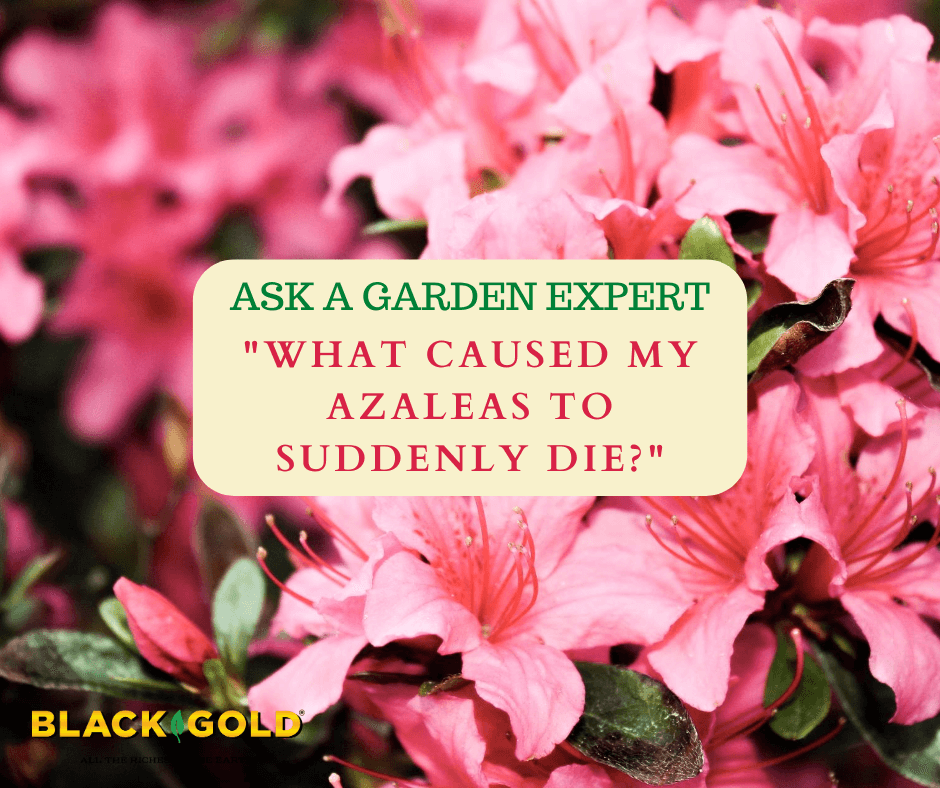
“I have many azalea bushes in my yard, and this year, I had three suddenly die off. I couldn’t detect any pests or that type of issue. They were around a tree, and all four lost their leaves very quickly. One has sprouted green. One seems quite dead, and the other two are still bendable and not dead, but have no leaves. Any thoughts on what caused this? Also, do you feel the others that are bendable may come back?” Question from Mary of Longwood, Florida
Answer: There are several fungal diseases that can cause stem dieback and/or sudden death in azaleas. All become more pronounced when there is excess moisture, humidity, and the soil is not sharply drained. Here are the top three possibilities.
Azaleas Diseases that Cause Sudden Death
- Phytophthora Root Rot (Phytophthora cinnamomi) is a common, fast-acting, deadly disease of azaleas, and excess soil moisture and warmth encourage its growth and spread. Some infected plants will wilt and die very quickly. Others will grow slowly and may have poor-looking living branches, but infected plants typically succumb to death pretty quickly. To identify this disease, look for discolored, reddish-brown roots that are dead or dying. Badly infected plants will show the same discoloration on the lower stems. Remove all infected shrubs and dispose of them away from your garden. Sadly, this disease remains in the soil, so consider raising the soil in your beds to encourage better drainage, and plant something different in the spots. (Click here for good information about the best Florida landscape plants.)
- Phytophthora Dieback (Phytophthora cactorum) is the most common azalea disease that causes dieback. It is also a disease caused by poor soil drainage. The first symptom is wilting with leaves that curve inward. One difference from root rot is that the roots look blackened and pull up easily. The stem will often show brown discoloration at the base near the soil surface. Treat as you would for Phytophthora root rot.
- Rhizoctonia Root Rot (Rhizoctonia solani) is a deadly disease that behaves like the others, but the plants exhibit severe brown and black spots on the leaves, so I don’t think that this is the disease that took your azaleas.
When removing any diseased plant material, rake away and remove any dead leaf or stem material that may be contaminated with disease-causing spores. When pruning your surviving azaleas, avoid cross-contamination by cleaning your pruners in a 10% bleach solution when making cuts from one plant to another. Adding additional topsoil and amending beds and new planting areas with fertile organics, like Black Gold Canadian Sphagnum Peat Moss, will help any future azaleas that you plant.
Underwatering Azaleas
Azaleas properly planted in well-drained soil need regular water. One other less likely option is that your shrubs dried up due to lack of water. If this could be the cause, I suggest laying drip hose around the remaining azaleas, applying mulch, and irrigating the shrubs once or twice weekly in the absence of drenching rain.
I hope that this helps!
Jessie Keith
Black Gold Horticulturist

